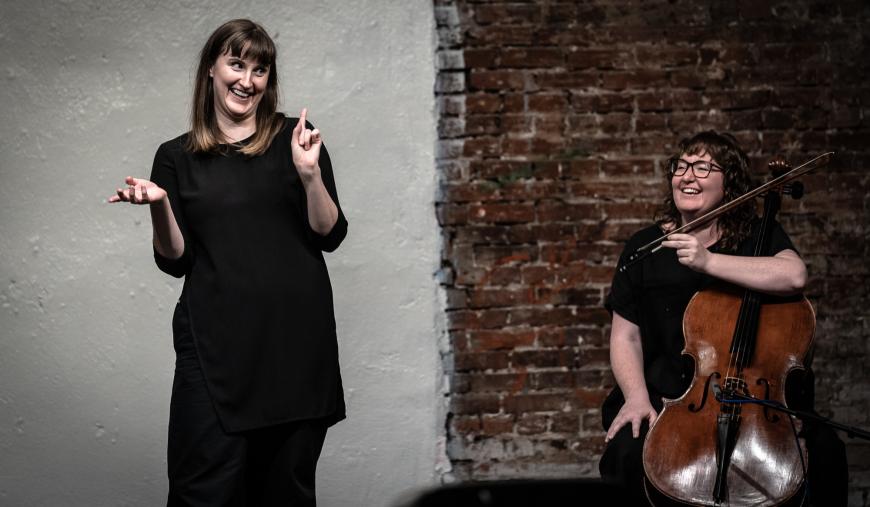
October was the right time for Rachel Beetz’s “Self Portrait” concert. A tingly spookiness pervaded the works that the flutist and composer performed on Oct. 8 in the latest installment of Brightwork newmusic’s Tuesdays @ Monk Space series.
From the curious gloom of Undertow to a buggy and claustrophobic improvisation on piccolo to the long final work, during which we gazed at footage of a full moon, we were party to some distinct musical witchiness. It was sincerely magical to witness Beetz diligently build pieces from esoteric, occult-seeming flute techniques.
Beetz is a longtime performer and composer with Brightwork, and this concert was a happy opportunity to highlight her most recent creations. The first half of the program featured a handful of her solo works for flute and piccolo; in some she used live electronic processing.
She opened with Viskuvinátta, written for flutist Berglind María Tómasdóttir. The piece revolves around the technique of singing and playing simultaneously, which can create a wide range of acoustic byproducts when the sound waves of the singing interfere with the flute playing. The combination is eerie, like a song underwater, and often a mysterious third voice seems to arise out of the friction. Beetz unfolded the piece like a storyteller, slowly developing melodies that were lyrical and folk-like, dark and cold.
Speaking afterward, she explained that the work is about the “wisdom” of her friendship with Tómasdóttir. Though the show was called “Self Portrait,” Beetz said that for her composing is never a solo journey and that she felt it was important that we know something about the way in which specific people influenced the genesis of each work. Given that the roots of her compositional practice are in ensemble playing and performing and developing new works, this orientation made sense.
Improvisation is central to Beetz’s art — she recently opened the High Zero Festival of free improvisation and this past August released an album, Pareidolia, consisting of a 40-minute improvisation. Rounding off the concert’s first half was an untitled improvisation — still in development — for piccolo with electronics. Beetz said she wanted to show “another kind of stage a piece can be in,” adding slyly, “the plan is to circular breathe throughout.”
What followed was dense and frenetic. It was anxiety-inducing to watch her manage and conserve her breath via this technique, but it was also exciting to follow her down these musical phrases like narrow ant tunnels. She surfaced for air once — while not part of the “plan,” the brief reprieve had great effect.
Often starting from a special technique — like singing into the flute while trilling — Beetz patiently builds compositions around only a few elements. Her pieces are clear and minimal, and she doesn’t allow cruft to accumulate and get in the way of the texture.

The final piece of the night, Luna, demonstrated this approach. The composition is part of the music for a video installation by cellist Jennifer Bewerse that involves footage of all the full moons in a year, as well as seasonal vistas on the two equinoxes. In this iteration, we watched the Worm Moon (the full moon in March) pass diagonally across the wall, moving almost imperceptibly as Bewerse played long-bowed tone after long-bowed tone on her open C string.
Far from being painfully boring, Beetz made the subtlest changes in bow pressure and placement engaging as she accompanied the journey of the moon with a drama of perceptible timbral shifts. When the moon arrived at the center of the wall, Bewerse’s sound was at its fullest as she weighed down the free end of her bow with her right hand with fine, strong control. I became emotional paying such close attention to the textural topography of this most basic, most beautiful experience — the open string of a cello and the moon.




